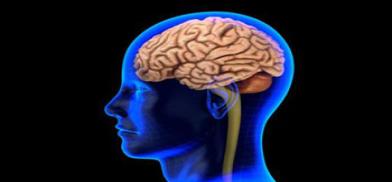What causes the Eureka moment in the brain?
During relaxation of the brain or when one is not thinking about a problem, some other neural pathways are made and these may create the trigger resulting in the Eureka moment, writes Anil K. Rajvanshi for South Asia Monitor

All of us sometimes or the other have experienced the Eureka moments or insights where suddenly the solution to a long-vexed problem emerges in a flash.
Such eureka moments or sudden insights have been the basis of some of the greatest discoveries of this world. Thus, the flash of insight of Archimedes - who ran naked on the streets of Athens shouting Eureka and hence the origin of the word Eureka - Einstein, Newton, Buddha, McClintock and innumerable other great discoverers came mostly at a time when they were not expecting it.
For example, Archimedes got his insight of Archimedes principle when he was sitting in his bathtub; Einstein got his idea about the general theory of gravitation when he visited the painter who had fallen from the roof; Buddha got his enlightenment after consuming rice pudding; and Newton got his idea of gravity when an apple fell on his head!
Passion and will power
Nevertheless, great discoveries and insights have come from people who have thought very deeply about the problem at hand. During this process, it becomes a junoon (passion) for them; the whole brain is simply seized with one idea or thought which occupies it for a very long time. This requires tremendous will power which leads to powerful concentration and helps in making the mind prepared for the insight.
This deep thinking or internal churning of the brain is called Sanyam by Patanjali in his Yoga Sutras. Sanyam is defined as a combination of focus (Dharan), contemplation (Dhyan) and immersion (Samadhi) done on any subject or object. Patanjali says when Sanyam is done on anything, it is complete knowledge results.
However, most discoverers have also stated that though they thought deeply about the problem, the solution sometimes came unexpectedly and in a flash. So what exactly is the mechanism by which such insights suddenly appear? We will try to explore it with the knowledge of neural pathways and their mechanism.
Neurons and thoughts
The thought production in the brain takes place when a large number of neurons fire in a particular manner. This firing activates the neural pathways. And it is a generally accepted fact that energizing and triggering of neural pathways produces thought which is a three dimensional hologram. We still do not know how many neurons are involved in producing a single thought, yet these numbers are large.
These large number of neural pathways are the result of about 1000 trillion connections in the brain that are available for communication and thought production. Not all connections are involved in producing thought but certainly, these numbers are in billions.
These numbers give rise to extreme complexity and far from equilibrium conditions in the brain and the production of insight or Eureka moment is the result of spontaneous order from chaos.
Spontaneous order out of chaos is explained both by the chaos theory and Prigogine’s dissipative structures concept where deep mathematics shows how a “structure” spontaneously appears in a chaotic system. Some examples of such structures are convection cells produced in water which is heated from below and synchronized glowing of large number of fireflies after their initial random firing.
Chaos theory
These structures appear suddenly when chaotic systems are slightly perturbed by a trigger though we do not know what causes it and how it is produced. This is explained in chaos theory where it is said that when a butterfly flaps its wings in Brazil, there are storms in Texas! In other words, a very small disturbance (trigger) in a chaotic system (in this case weather) produces large changes in its outcome.
So, what creates such a trigger in the brain for insight production? A couple of reasons can be conjectured.
The brain constantly compares its deep internal churning with the object or subject of concentration; when the comparison fits like a lock and key, it might provide the trigger for the Eureka moment and the discovery. Thus, not only the internal process of churning in the brain is important for preparing the mind but the interaction of thought with the object of concentration is necessary.
This comparison is based on the perceived reality by the mind and is a function of previous information about the object of concentration.
Absence of ego
Another reason could be when the brain is feverishly thinking about a problem, sometimes a mental block occurs. During relaxation of the brain, or when one is not thinking about the problem, some other neural pathways are made and these may create the trigger resulting in the Eureka moment.
Some great discoveries have also come during the dreaming process when the ego is absent. This could also be the reason why unexpectedly a solution is obtained.
(The writer, an IIT and US-trained engineer and renewable energy expert, is Director, Nimbkar Agricultural Research Institute, Phaltan, Maharashtra. The views expressed are personal. He can be contacted at anilrajvanshi50@gmail.com)











Post a Comment